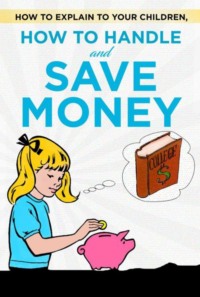Buch lesen: "How to explain to your children, how to handle and save money"
How to explain to your children, how to handle and save money.
By Thorsten Hawk
Content:
1. what is money, anyway?
First means of payment
The paper money
Intangible money
The term money
2. Learning how to handle money.
3. let children pay the baker with their parents' money
4. keep money safe. On the way, at home, bank account
5. age-appropriate allocation of pocket money
6. 1/5 of all income goes into the piggy bank
7 The power of interest and compound interest
8. learn to prevent spontaneous purchases
9. consumer debt is bad
10. investment debts are okay
11. acquisition costs - compare prices
12. larger purchases, parents participate, children help in the household for example
13. giro card and credit card
The debit card
The credit card
Teaching children how to handle money and how to save money for parents.
Two proverbs symbolize the power of money:
Money rules the world. and
No ticky, no washy.
If money is lost in times of crisis, it can plunge the world into chaos, it runs like sand between your fingers.
On the other hand, it embodies a value that must be kept safe.
Children and young people learn how to handle money from their parents and thus become successful later on.
With the help of this book, parents should explain financial issues to their children. Some helpful examples and ideas for implementation are given.
Unfortunately it is the case today that the subject of money is not taught at school and young people do not learn how to handle money. Therefore parents should read this book and go through the individual points with the children.
An age recommendation can only be given indirectly. Some points are only understandable for young people, other points can be explained from the age of 6 years.
1. what is money, anyway?
In the old days, people traded goods directly with each other. As a means of intermediate exchange, people used grain, livestock or shells or precious metals such as silver or gold. The goods were available in sufficient quantities, reusable and not perishable. The desired goods were thus exchanged. This so-called commodity money consisted of natural objects, pieces of jewellery or general useful objects and livestock. Some of these early forms of money are still means of payment today, such as the stone money in the Ulithi atoll in Yap, Micronesia.
First means of payment
Around 2,000 BC, shells were the first Chinese currency.
The useful objects were always passed on and thus not used as commodities. Instead, small, less valuable replicas were later used as means of payment such as knife money or spade money, from which coinage developed.
Countability, storability and easy transportability were preferred in the choice of material and to store values such as bars and wires of bronze and silver. Coins were minted by people from before Christ. The materials and alloys changed.
The paper money
Paper money was created by the Chinese in the 11th century for coinage, as a substitute for coin shortage. In Europe, paper money appeared in Spain in 1483 due to a lack of coins.
In the 17th century, the state banks created currency in the form of banknotes as legal tender in the state territory. With more than 160 official currencies worldwide, the US dollar and the euro are international reserve currencies. Third place is shared by the British pound and the yen. Due to the sharp fall in the price of silver at the end of the 19th century, many states decided to deposit their currency in gold.
Intangible money
Immaterial money was developed by the Romans. From the cheque traffic in the 14th century the present form developed. Coins or precious metals were deposited with the bankers. The customer has payment claims against the bank, which were paid out on demand. From this, cashless payment transactions developed into the standard in the 20th century.
Transfers became possible and the banks traded among themselves.
When shopping, customers mainly used debit and credit cards, which now function without contact. The cards access the user's account and settle the payment. Cards and payment systems are used for online banking.
Digitalisation offers customers, vendors and banks various possibilities.
The term money
In the old and middle High German there were valid for retaliation, remuneration or income. Today the term remuneration is commonly used to describe a consideration agreed upon in a contract.
Money explained to children:
Barter is only a solution when the other person needs the barter item. For example, people used mussels, cocoa beans or salt as means of payment. Children can also use coffee beans in the shop. People used the gold and silver pieces when they discovered the metal. Children understand that like sacks of gold was heavy and impractical. Paper money was invented and later plastic money like credit cards.
Die kostenlose Leseprobe ist beendet.
